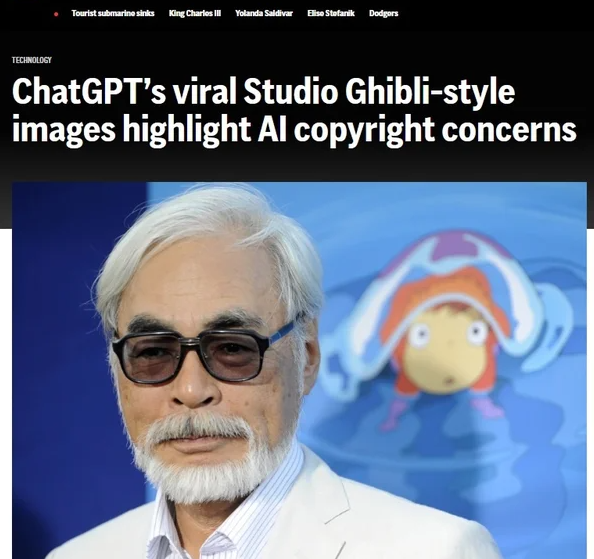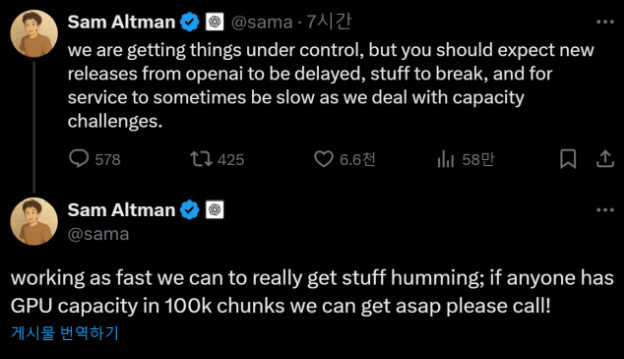
OpenAI’s new image generation function has gained sensational popularity and has exceeded 150 million weekly users. OpenAI is struggling to maintain its service despite congestion of access, but there is a possibility of delaying the release of the next artificial intelligence (AI) model due to lack of graphics processing units. However, criticism is growing as OpenAI remains silent on AI copyright issues including animation, and even a paper has revealed that it illegally learned paid works. On the 1st, OpenAI CEO Sam Altman wrote on his social media X, “We are controlling the situation, but capacity issues may delay the release of OpenAI and disrupt some functions or slow services. If anyone has 100,000 GPUs, we will secure them as soon as possible, so please contact us.” He wrote, “It feels like I’m back to the founder of Y Combinator, who has begun to build an open service.” Y Combinator is the world’s largest startup accelerator that Altman served as CEO.
As users flock to image creation and all available GPUs are used to maintain service, it is interpreted that there is a lack of GPUs for research and development of new models or to expand the scope of delivery. In fact, ChatGPT is currently causing intermittent connection failures. The speed of work has also slowed significantly.
Since the launch of the GPT-4o image on April 25, “Ghibli-style” image generation has gained huge popularity around the world, and ChatGPT has been suffering from congestion of access. SimilarWeb, a market research firm, said that for the first time this year, the number of real-time users (WAU) of ChatGPT has exceeded 150 million. According to Sensor Tower, since the launch of the GPT-4o, ChatGPT global app downloads have increased by 11 percent from the previous week, weekly active users have increased by 5 percent, and in-app purchase (subscription) sales have increased by 6 percent, all reaching all-time high.

Altman is sharing the situation in real time through X. On the 27th of last month, he said that “GPU is melting” and that users are flocking to the site. On the previous day, he wrote, “One million more users have been added in the past hour,” which is a huge speed compared to the initial launch of ChatGPT that took five days to reach 1 million users.
OpenAI is also planning to open Deep Research, which can only be used by paying subscribers, to free users soon, which is expected to intensify the problem of GPU shortage. “Deep Research will be distributed to free users soon,” OpenAI engineer Isa Pulford said in a webcast. Deep Research is an AI agent that produces expert-level research reports through in-depth search and reasoning.
OpenAI is happy and happy due to the surge in users, but criticism of AI copyright issues still remains. It is clear that OpenAI has learned the original “style” of various animation producers, including Studio Ghibli, and is making profits from it.
Reuters said, “Ghibli founder Hayao Miyazaki said in 2016 that he would not introduce AI-generated images, calling them ‘disgusting,’ and added, “OpenAI is still silent about the legality of the data used for AI training and the new image generation function.”
On the same day, the non-profit organization “AI Disclosure Project,” founded last year by O’Reilly Media and economist Ilan Strauss, published a paper that OpenAI GPT-4o trained O’Reilly Media paid books without a license agreement. The group reportedly used a “membership inference attack” to detect copyrighted content in AI training data to find that GPT-4o recognizes more private paid-book materials than previous generation models.
“Although it is a circumstantial evidence, OpenAI is already experiencing several lawsuits over its learning data practices and handling of copyright laws,” TechCrunch said. “OpenAI did not respond to requests for comment.”
JENNIFER KIM
US ASIA JOURNAL



